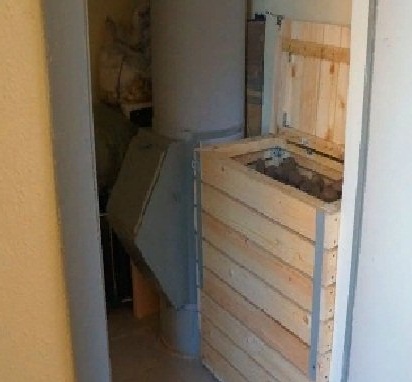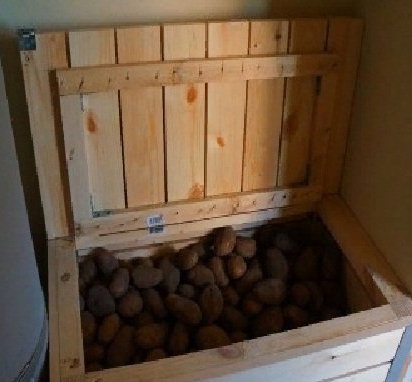
Hello dear the inhabitants of our site!
Probably, many of us, not by hearsay, are familiar with such a problem as the storage of some stocks, which are either bought or grown in our dachas for the winter, in apartment buildings. Lack of space, there is no way to properly place everything that we bought, raised or acquired for the long winter months. Most likely, even those who have free squares for the pantry will experience some inconvenience due to the fact that vegetables and fruits are stored in the apartment. After all, they need to maintain a certain temperature regime.
This question, in my opinion, was very decisively decided by the author of this project. Namely, he made do it yourself a box for storing potatoes and installed it on the landing, near the garbage chute. According to him, the air "walking" through it, just creates all the necessary conditions for long-term storage of vegetables. Not cold, but not hot either.
For the manufacture of such tools and materials will be needed, such as:
Boards, bars, wood screws, metal corners for fastening, tape measure, pencil, screwdriver or screwdriver, aluminum corners for guides, hacksaw for wood.
The first step was to cut the bars to the desired size of the future box.
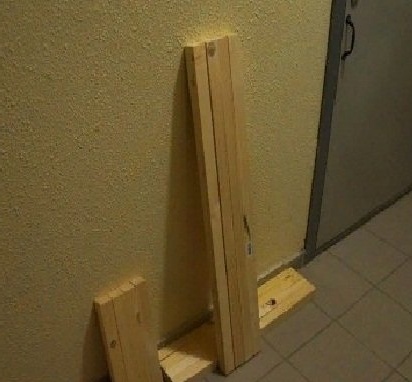
Next is the assembly of the frame using self-tapping screws and metal corners. They give the entire structure greater rigidity and help achieve almost perfectly even angles. The box itself, due to the limited space in the place of its installation, will stand vertically, and not horizontally, as you might see in the photo.
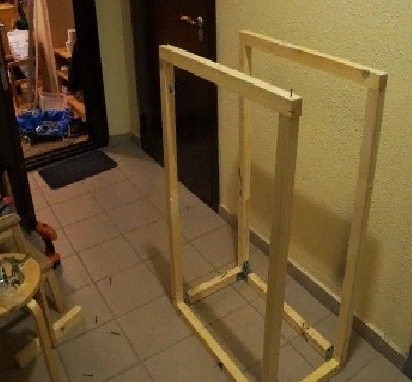
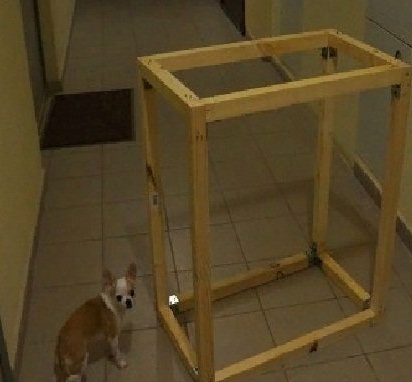
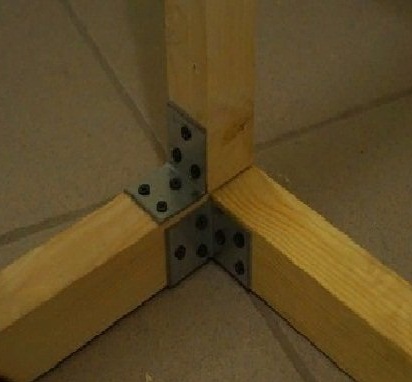
In order for the bars to not split due to the fact that a lot of self-tapping screws are twisted at a small distance from each other, it is advisable to drill holes with a drill of a smaller diameter than the self-tapping screws. But not the length of the whole screw, but about 2/3. This is from my personal experience, although a lot depends on what kind of wood is used.
Further, the author begins to sheathe the back side of the box with boards, leaving a gap of about 1 cm between them. This is a necessary condition for improving ventilation properties.
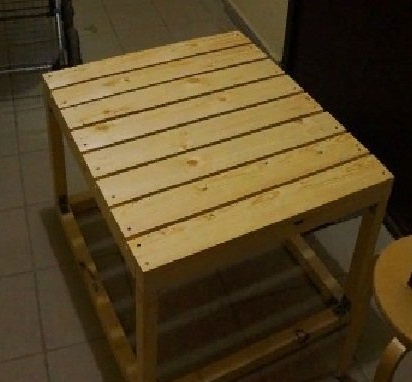
The back wall is sheathed. Now proceed to the front. Since it was decided to make the front wall partially collapsible for easier access and laying potatoes, the bottom boards are fastened “tightly”. But for the rest will be inserted into the guides from the corners.Corners will be screwed to vertical bars so that between the corner and the bar there is a distance that is slightly larger than the thickness of the cover board.
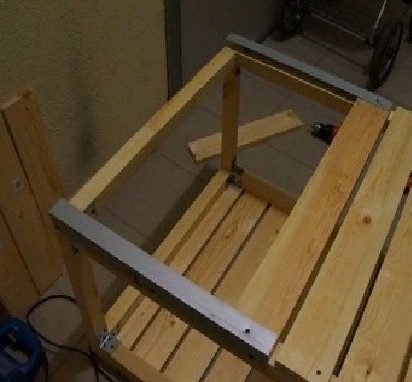
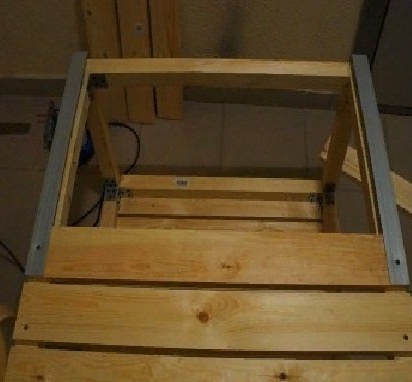
After that, the side walls and the bottom of the box are sheathed. Several smaller shafts are also attached to it. For ventilation and more convenient movement of the product.
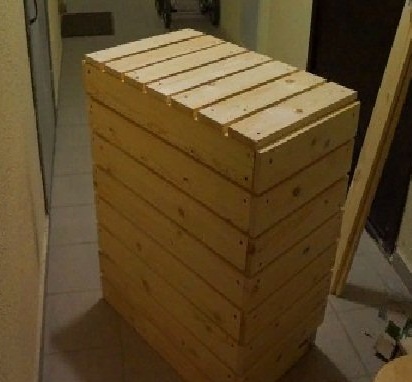
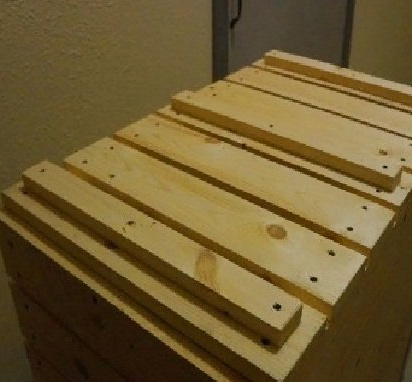
The upper boards are inserted into place. Since it is not screwed with screws, then on the ends of each of them, from two sides, screws are screwed. With their help, it is very convenient to adjust the width of the ventilation slots. We start trying on boards for making the top cover. They are not screwed yet.
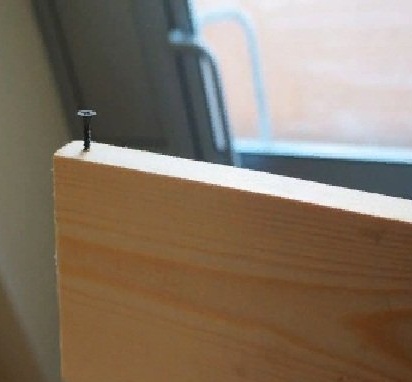
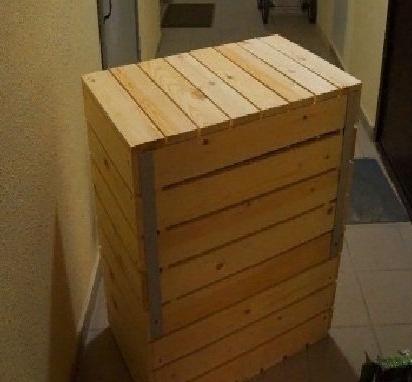
Now the lid for the box is assembled from thinner bars to which we will fix the hinges and boards. These bars are also fastened together by metal corners, but only smaller, corresponding to the thickness of the bars. Fasten the frame to the drawer with a long furniture hinge. We fasten the remaining boards, also leaving small holes between them.
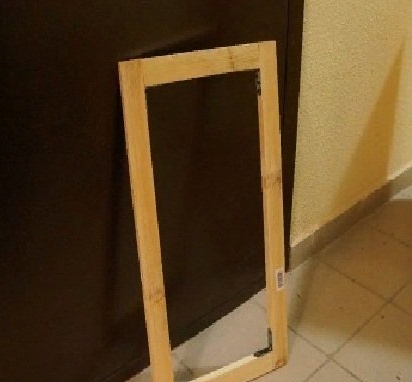
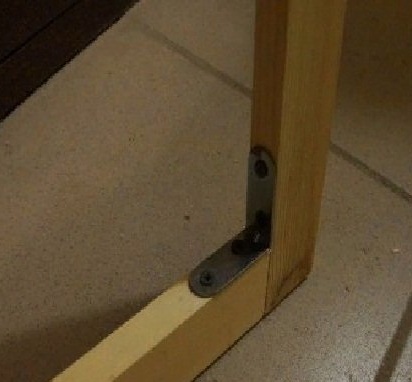
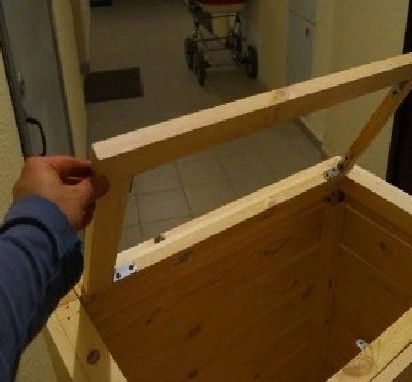
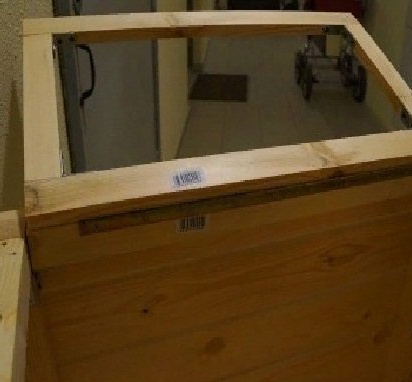
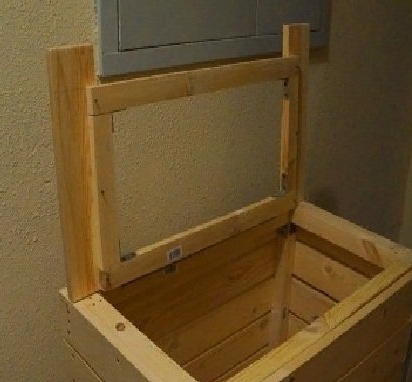
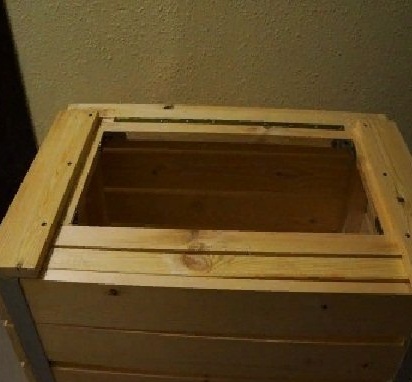
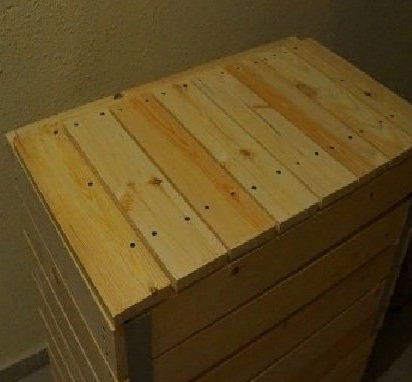
Since the author did not want to "bother", he used self-tapping screws of the same size, without bothering himself with the selection of the length necessary for a certain stage of the operation. Therefore, in many places they went outside and their sharp tips are visible. Taking the grinder, he solved this problem by shortening them.
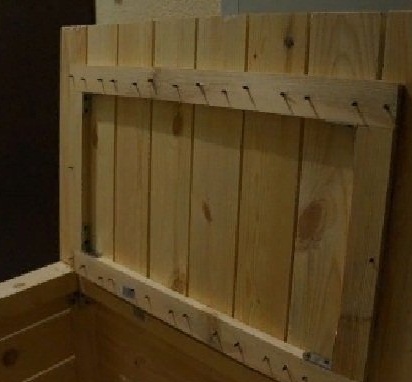
The box is installed in its place.
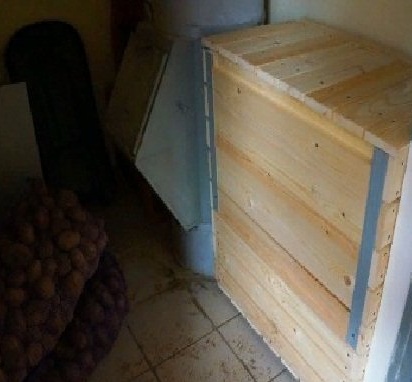
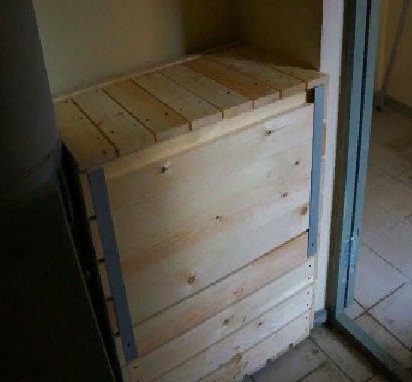
In order to conveniently fill the potatoes in a box, boards that are not fastened tightly are removed. They are simply pulled out of the runners. Supplies are falling asleep. According to the master, the benefits are immediately noticeable. A hinge for a padlock is installed on the cover. You never know what ...
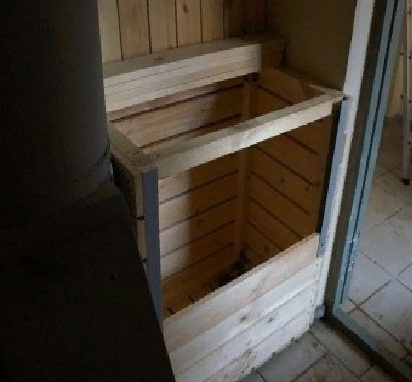
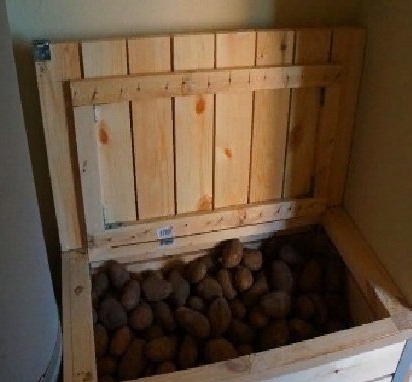
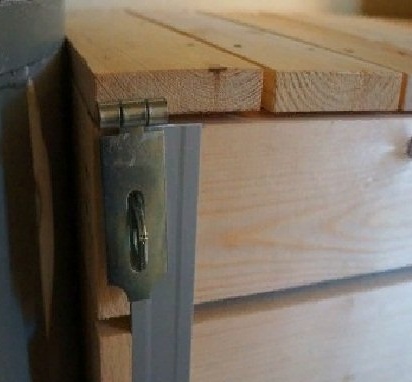
The master expresses the hope that his design will help to save supplies and save space in his apartments!
